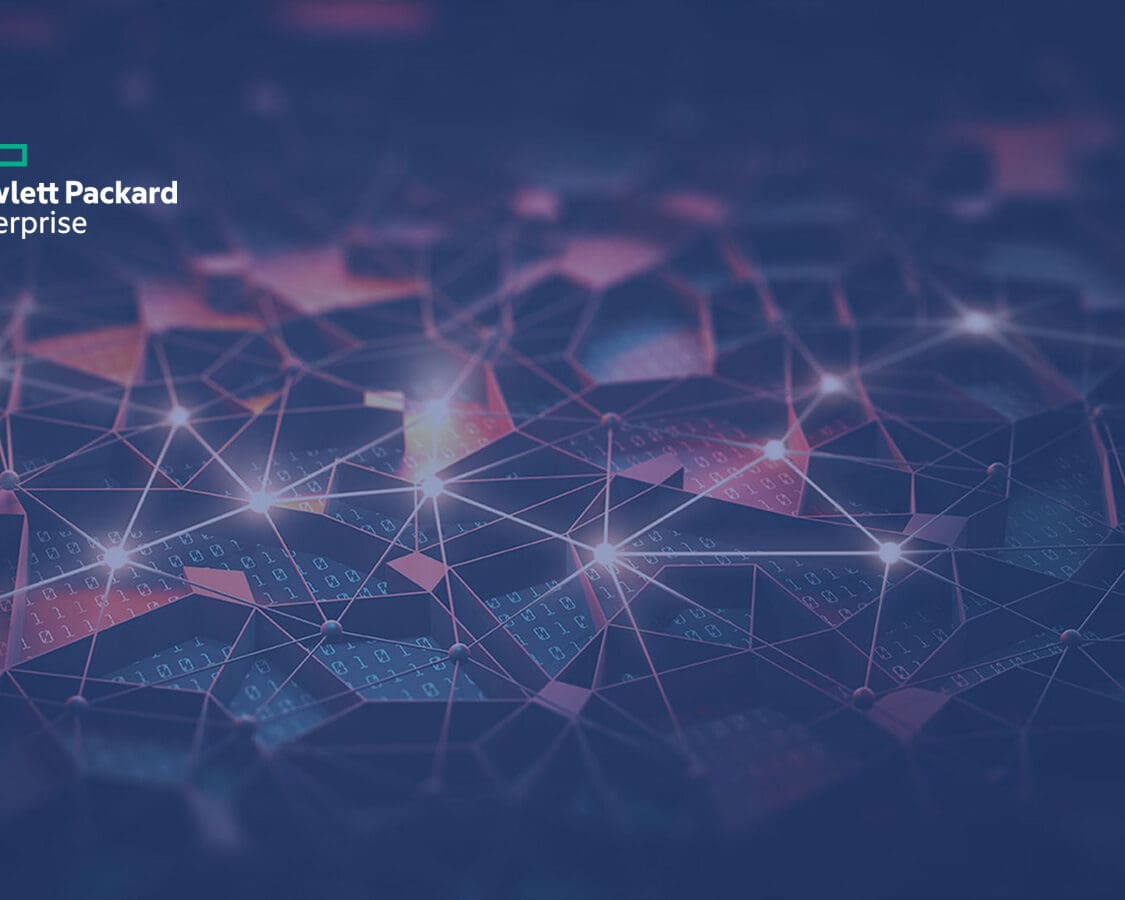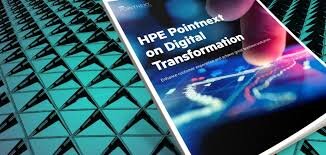Today’s diversity of hybrid IT models and environments demands that IT services and support accommodate more digital variables than ever. This burgeoning complexity and the fast-changing dynamics of digital businesses are pushing enterprises to seek a complete and holistic way to support all their technology — from every edge to every cloud — in one bold stroke.
That’s the market driver behind a new pan-IT services offering from Hewlett Packard Enterprise (HPE) Pointnext Services called HPE Pointnext Complete Care. The all-inclusive approach moves past product-based experiences of support to an all-IT-environment-wide experience. It both reaches back to provide legacy and product support and extends to the intelligence-driven and proactive optimization of all digital business services.
Listen to the podcast. Find it on iTunes. Read a full transcript or download a copy.
The next BriefingsDirect Voice of Tech Services Innovation series interview examines how HPE Pointnext Services has developed this solution to satisfy the broad new definition of complete IT tech support.
To learn more about bringing what amounts to a warm blanket of support across the entire IT environment please welcome Gerry Nolan, Director of Operational Services Portfolio at HPE Pointnext Services. The interview is moderated by Dana Gardner, Principal Analyst at Interarbor Solutions. Here are some excerpts:
Gardner: Gerry, how has the world changed since HPE Datacenter Care arrived back in 2012? I guess we can no longer define IT by a datacenter metric — it’s now gone much broader and wider.
Nolan: You said it, Dana. I feel a bit old thinking that 2012 was just yesterday. But back then the momentum was all around IT consolidation, the move to virtualization, and customers moving to x86 platforms.
IT’s not 2012 anymore
At the time, studies showed that average downtime was about 97 minutes per year, with the average cost at $8,000 a minute. The most common cited reason for failure was the hardware, along with people making mistakes. At the time, about 50 percent of the downtime was caused by hardware failure and 50 percent by human error.
Today, studies show that the world is a totally different place. Now it’s all about hyper converged infrastructure (HCI), hybrid IT, and cloud computing in all its various forms. The move to edge is a significant trend. And, of course, the move to digital transformation has been accelerated by the COVID-19 pandemic. And that means it’s all about IT as an experience and bringing differentiated experiences to the market.
Look at areas outside of IT. If you think about buying a car and how Tesla has transformed that experience or going on a vacation and how web sites such as Airbnb or Booking.com have totally transformed that. The experiences define those use cases — and IT is no different.
In 2020, studies showed that downtime is even more scary — with the average cost of a minute of downtime up from $8,000 to $17,000. With the move to digital, any downtime or impact to your digital platform has massive implications not just with the direct revenue and orders impact, but they can seriously damage your reputation and brand for years.
With the move to digital, any downtime or impact to your digital platform has massive implications not just with the direct revenue and orders impact, but they can seriously damage your reputation and brand for years.
An IDC study that jumped out at me last year, for example, says having a support experience around IT shouldn’t be viewed like it was back in 2012, as an insurance policy. Today it’s more important to think about partnership agreements that drive better service-level agreement (SLAs) and overall performance. It’s about driving the business forward and enabling the business.
IDC found the enterprises that had these types of agreements saved an average of 634 hours of unplanned downtime. And 200 hours of that were the benefit of the proactive nature of using artificial intelligence (AI) and other tools, as well as having access to smart people who help mitigate against the bad things from happening.
So, yes, the world really has changed a lot since we first introduced HPE Datacenter Care back in 2012.
Gardner: Sure, so we’ve seen the change of vendor and support relationships to more of a partnership in supporting the full business. But there’s been a progression to getting to what we now call HPE Pointnext Complete Care. And one of those big steps was with HPE Pointnext Tech Care. How did that fit into the progression? How should we think about this as an evolution?
Nolan: Yes, we are transforming the overall support experience for our customers. The first step out of the gate was differentiating the experience with our HPE products by crafting a new, totally transformed support experience called HPE Pointnext Tech Care. We launched that in April on our HPE Server product line. It will be fully available across all products by August.
Time to transform how we work
It transforms and uplifts the user experience when dealing with HPE products by bringing to bear a whole range of new aspects, including a new digital platform, to allow customers much easier access to both the knowledge they need as well as multiple ways of accessing our experts around the world. They can do that through video, chat, moderated forums, and live conversations. It also embeds AI, so the telemetry built into our products feeds back to the mothership and then delivers a wide array of dashboards, alerts, insights, and recommendations back to the customers.
As a result, the users have a beautiful, rounded, broader suite of capabilities that allows them to gain more information to more easily self-solve and self-serve. But, of course, they also have broad access to knowledge and expertise when and how they need it. That’s what HPE Pointnext Tech Care, which replaces HPE Foundation Care and HPE Proactive Care, is all about.
For those familiar with those services, which have been around for many years, HPE Pointnext Tech Care is the new, single product support experience for all HPE products. We’re very proud of it and we’re getting great feedback from our initial customers. They love that they can go to a single portal and see these dashboards. They now have many ways of accessing our experts, and, of course, everyone’s different. Some people like to talk live to experts, while others like to watch videos or go to moderated forums to talk with peers and other customers. Our experts are also in those forums responding and providing links to various articles.
It’s a very rich — and we believe — transformative experience that takes support to the next level. And, with HPE Pointnext Complete Care, we’re going to elevate that even more by taking support beyond the products and looking at the entire environment.
Gardner: Another big differentiator for HPE Pointnext Services is that this not just for HPE support — this is pan-vendor support. You’ve been agnostic in supporting — with one throat to choke, if you will — a vast universe of technology. How does HPE Pointnext Complete Care advance that concept of all under the same support umbrella?
Nolan: Yes, we’ve been doing that for years, adding significant multivendor capabilities. With HPE Pointnext Complete Care, it focuses further on providing a complete support experience for the customer. That includes whatever capabilities exist — both from inside of HPE or some of our partners – and brings all of that into a complete, single framework for the client. That means covering the customers’ complete IT environment, however they define it, by acting as their single point of contact for whatever they define as their IT. In these days, of course, that can be quite a wide and varied scope.
For example, a casino I recently talked to is actively acquiring new companies in different parts of the world. They’re bringing onboard those companies, all with their own IT setups. The chief information officer (CIO) is looking to bring all of that together under a single framework with a single partner to work with them. They want to evolve to control what they have, as well as take it all to a more standard framework.
Another company that jumps to mind is a large international bank looking to move to an increasingly hybrid IT structure, with some on-premises cloud services to support their legacy IT. They’re migrating from that legacy to an x86, container-based, heavily automated private cloud. They need a single partner to help them through that digital transformation and through that evolution. The goal is to help them operate and manage their old, while also taking care of all of that new technology.
HPE Pointnext Complete Care brings it all under one umbrella to give the customer a single team and a single point of contact. Whatever IT they have, they can work with that single partner to optimize the entire environment.
There are many aspects to HPE Pointnext Complete Care in terms of helping a customer in those different use cases. It’s not just HPE products. It’s many different IT technologies. Today that includes things such as hyper-converged, edge, and Internet of Things (IoT). There’s a lot of open source use, and a plethora of other software including some of the new automation tools.
HPE Pointnext Complete Care brings all of that under one umbrella to give the customer a single team and a single point of contact. So whatever they have in their IT — wherever their IT is — they can work with that single partner to operate and optimize that entire environment.
Gardner: The timing seems perfect because, as you mentioned, there’s so much more complexity to providing a business service that ultimately reaches back into multiple service providers, using multiple technologies.
Nolan: Exactly.
Gardner: We need those services to be robust. If there are issues, there’s no time to point fingers but instead to find the root causes and assign responsibility for fixing it. You need to look at the whole picture, and the speed element is something here that strikes me as essential.
Nolan: Absolutely.
Gardner: It seems to me that we’re looking at an awfully complex undertaking. How do you mitigate the complexity?
Comprehend complexity and manage it
Nolan: Yes, customers are challenged. We’re still in the pandemic. We’ve learned a lot from our customers as they have worked through all the various implications. The response has elevated the whole move to digital, as I mentioned. It’s really important that customers have a strong handle on the digital aspects of their businesses.
Whether you’re ordering coffee, buying a car, or doing some banking, you’re working with some level of digital platforms these days. Therefore, that becomes a critical aspect of enabling the business. We want to make sure we can help customers set up, run, and optimize their digital platforms – and that’s something HPE Pointnext Complete Care is set up to do.
Risk mitigation is critical. We see customers challenged with just trying to get ahead of issues before those issues cause downstream impact to their businesses. They want access to expertise and best practices. They are obviously always looking to get the best bang for the buck because customers are still under tight cost constraints.
They also have struggles due to the finger-pointing that comes with managing multiple vendors and as they bring on more open source software and automation tools. There are more and more companies involved, and so more and more and different relationships to manage. All of this can be challenging.
If you’re struggling with bandwidth and budget while trying to mitigate risk — all these factors build to create challenges across all of those dimensions. Having a single point of contact is something we see customers challenged with — and something they value a lot.
We also see organizations aim to reduce their carbon footprint and achieve new corporate-wide sustainability goals. So, that’s something we’re also building into the HPE Pointnext Complete Care value. Working with our financial services organization within HPE allows customers to benefit from their programs. They can monetize old hardware, and we can buy that hardware back and give the customer a payment that they can then invest in newer technologies — more carbon friendly and sustainable approaches. So, we’re excited about how we can help customers across all these different dimensions.
Gardner: As a recap from our earlier discussion when HPE Pointnext Tech Care came out back in the spring, one of the things that was very impressive to me was the use of technology to better manage – technology. At HPE Pointnext Services, you’re using technology to trace and discover IT assets and use that data to gain a complete view of what’s going on in an organization.
Working with our financial services organization within HPE allows customers to benefit, too. They can monetize old hardware. HPE will buy it back so they can invest in newer technologies — more carbon friendly and sustainable approaches.
It’s allowing not just break-fix reactions but the capability to get out in front and to be proactive on maintenance, patching, and to quickly identify anomalies to head them off before they become breakdowns. So, the advent of the technology that you’re able to use to satisfy these problems is also very powerful, and HPE Pointnext Tech Care demonstrated that.
Nolan: Absolutely, well said.
Gardner: All right, let’s go to HPE Pointnext Complete Care in more detail. This has just arrived. People are trying to wrap their heads around it. What’s the grand vision for HPE Pointnext Complete Care now that we’ve moved through this evolution from HPE Pointnext Tech Care and better understand the IT environment that we’re in?
A warm blanket of IT support
Nolan: I view the HPE Pointnext Complete Care experience as that “warm blanket” of support that we can put around the entire customer’s IT environment. The beauty of the framework is we’re going to be delivering and evolving this over the coming months to provide a modular approach. That means we can provide flexibility across an extensive and growing menu of capabilities.
Whether it’s looking at your security, compliance, or performance – this includes all the different aspects of your IT. It means managing your assets, be it hardware or the software licenses. And then we provide the innovative solutioning tools to our partners as well as our own staff to enable personalization for each of those different customer use cases I mentioned.
Yet every customer is different. They’re all starting from a different point on their journey. We will wrap around all those requirements that the customer has a single framework, a single team, a single contract, and a single invoice.
Everything needs to be simpler for the customer, even as their use cases have gotten more complex. It requires the wealth of HPE’s capabilities across all the technology — or in the multi-vendor space. We have a massive capability globally to fix and repair non-HPE products. So, whether it’s Dell servers, or IBM systems, or Brocade switches, or NetApp storage arrays — customers are often surprised that we can provide the same level of support on their non-HPE technology as their HPE technology.
We will keep investing in the digital platforms to bring forward all the AI and telemetry and make it more broadly available, as well as enriching the dashboards, alerts, and insights provided to customers that have the HPE Pointnext Complete Care framework. We will constantly make it better and help customers manage the lifecycle — not just provide support.If customers need to look at their strategy plans, we can bring in our strategy consultants. If they have a need for flexibility around payment plans or to monetize their older assets, we can partner with our financial services colleagues and bring them to the table. All of this can be done through a single HPE Pointnext Complete Care framework. It delivers a complete, end-to-end suite of value to cover all needs. That’s what makes our vision quite exciting for me.
Gardner: When I first learned about HPE Pointnext Complete Care, I said to myself, “Wow, this is pretty ambitious.” And one of the things I wondered is how you’re able to manage being all inclusive — providing a single point of contact — yet at the same time personalize and customize the support experience for every customer. How are you able to pull that off, Gerry, to be all-inclusive and simplified, but also customized and tailored to each company?
Nolan: That’s one of the beautiful things about HPE Pointnext Complete Care. We have a big benefit in that we’ve been doing this for – and I’m embarrassed because I’ve been here most of these — 40 years. We’ve been doing support of customer’s technology — whether it’s HP, HPE, or non-HPE technologies — for a very long time. We’ve built up amazing global capabilities, whether it’s supply chain or expert teams that specialize in different areas like SAP HANA or security or VMware or Linux or automation or containers — name your tech topic. We built up deep teams of experts that we can draw upon.
HPE Pointnext Complete Care is a big toolbox of capabilities across the company. We have teams that can readily help customers regardless of where they are on their journey. We’re able to do this due to the sheer breadth of capabilities available to us.
If you can imagine, HPE Pointnext Complete Care is this big toolbox of capabilities across the company, as well as working with our partners, and that helps speak to a customer. You can view that customer in their own unique scenario. It’s very helpful when you can turn around and talk to your consulting colleagues and bring in some strategy or help for the customer who has a desire to move to cloud. They may need some help figuring out, “How do I architect a good solution for all my various workloads?”
Because we know that not every workload is going to work in the cloud, we know that customers don’t typically throw out all their old technology. They want to keep their old technology but also get the most from it for as long as possible while they move to the newer models. And we have teams within our organization that can readily help customers regardless of where they are on that journey.
Again, we’re able to do this due to the sheer breadth and depth of the capabilities available to us. It allows us to turn up and develop what appears a custom-built solution for each customer. But, in fact, we’re leveraging capabilities that have been built up over 40-plus years. We’re putting them together uniquely for each client and we have the flexibility to do that. We are not tied to any one model, whether it’s on-premises, off-premises, hybrid cloud, IoT, edge, and containers.
We don’t have any specific bias to pushing a customer in one direction. We have so many tools in our toolkit, we do the best for that customer and give them the outcome that best satisfies their unique needs with HPE Pointnext Complete Care. That’s the value proposition and the beauty of the framework. We pick and choose the tools, assets, and capabilities and we map those to each individual client.
Gardner: Let’s chunk this out a bit. What are the major modules in HPE Pointnext Complete Care? How should we think about it in terms of how it’s constructed and architected?
Personalized, customer-centric care
Nolan: Because we’ve been doing this for a while, we carry forward into HPE Pointnext Complete Care all those proven key elements that customers love and are already delivering value. That includes key elements like having an assigned team with named individuals that work with the customer. That’s the first thing we will do with an HPE Pointnext Complete Care customer.
While we’re onboarding them, we enhance that by adding new roles into that assigned team and providing new profiling capabilities. We get to know that customer’s business, their key objectives and priorities, and then we build that into the plan and make sure anyone interacting with that customer has full visibility to what’s important to that specific customer.
For example, say I’m working with you, the customer, and you have a big customer event next week. We’re going to make sure that the entire HPE team working with you is ready to support you in that big event. We are going to make sure we mitigate all possible risks, and we’re going to have extra staff on hand to support you during that event. It’s important to have that level of detail of profiling. So, that assigned team is the first critical element.
In the broader scope, with HPE Pointnext Complete Care, we’re expanding the products and software that we can cover in the customer framework agreement. That helps to enhance the incident management capabilities. When bad things do happen – because, at the end of the day, hardware will at some point fail, or somebody will make a mistake — we make sure we can mitigate that. Whenever bad things occur, we’re enhancing the way that we manage those incidents. It makes for the best possible experience.
And, of course, we’re expanding the menu of new support capabilities; things like, broader services for open-source assets. We see many customers challenged with deploying the different varieties of open source products. And the move to automation and containers is accelerating the push to use of open source. Many of our customers are saying, “Boy, this is hard. It’s more complex than we imagined. It sounded, easy, fast, and cheap, but it’s none of those things.”
There are many benefits to moving to open source, but it is quite challenging. So that’s an area we’re going to help customers with. We have a lot of open source expertise within our company. We’re going to ramp that up with the launch of HPE Pointnext Complete Careto offer customers a single point of contact for all their open source tools.
And then, aligned with that, is our big focus on software in general. We see customers — especially coming out of COVID – who had companies such as Microsoft, Oracle, and others open up access to free licenses. But now, coming out of the pandemic, those vendor companies rightfully are saying, “Well, gee, we need to monetize this now. We need to audit what software is being used by our customers.” And, of course, those customers in many cases are struggling to know what software is in their estate. They have huge estates, now with remote software to enable their global remote workforce, and in many cases that’s gotten out of control. We see customers who don’t know what software they have. Nor do they have a good handle on the associated costs, compliance issues, and security risks.
We help customers find all their software licenses. We show them via different dashboards what’s being used. They can also see compliance risks, as well as where they’re spending too much. They can even manage their software estate.
As a result, another HPE Pointnext Complete Care module we’re launching focuses on software asset management (SAM). We help customers find all their software licenses. We show them via different dashboards what’s being used. They can also see where they have security and compliance risks, as well as what they’re spending — and perhaps where they’re spending too much. It shows how they could save money via recommendations in those dashboards. If they’d like, we can even do the management of their software estate thanks to the new SAM capabilities in HPE Pointnext Complete Care.
Those are some of the new exciting modules. It’s a long list, but those are a couple that jump to mind in terms of some of the new exciting capabilities we’re now introducing.
Gardner: As a global organization, HPE is helping each of these companies deal with these issues. That means what you learn in one part of world from one type of company can be applied to everybody else. There’s a vast amount of data gathered, and that can be applied and reapplied. It’s a very exciting time.
Gerry, let’s talk about your go-to-market strategy. This isn’t just an HPE-only entry point. What are you doing to make HPE Pointnext Complete Care available across a channel partner ecosystem?
Harness the power of partnerships
Nolan: HPE, like so many big companies, relies on our trusted partners around the world. We have an awesome network of partners, and we’re very excited with HPE Pointnext Complete Care to be opening that experience up to our channel partners.
Many partners have the desire to create an experience like HPE Pointnext Complete Care and deliver it to their end customers. But they may not have the full suite of capabilities. So, combining our capabilities with their capabilities, they all might be able to directly quote proposals to their end customers.
That would include HPE Pointnext Complete Care plus their own value. That’s a new capability available with HPE Pointnext Complete Care. We provide a new solutioning platform, which channel partners can directly access themselves. They can create proposals, basically on their own, and then bring in all the value of HPE plus their own value and be compensated to do that. So, it’s good for the customer, it’s good for the channel partner, and, of course, it’s jointly good for us as well. So, everybody wins.
Gardner: We’ve addressed the vast IT heterogeneity and how HPE Pointnext Complete Care will address that. But looking a little bit closer to home, within the HPE family of products, this has also given you an opportunity to unify around your HPE GreenLake as-a-service economics. You can put that umbrella over your product lines, such as Nimble storage, Cray for HPC, Ezmeral, and Aruba for networking and edge. So, tell us how HPE Pointnext Complete Care not only unifies a vendor ecosystem but unifies the HPE ecosystem and procurement models as well?
Nolan: One of the reasons we chose the name HPE Pointnext Complete Care is we are delivering that complete experience of bringing together a consistent, single point of support for the customer across all our products. I’m excited to say that, “Yes, we’re expanding the scope of HPE Pointnext Complete Care.”
So it includes all the products you just mentioned. Whether you have Nimble in your environment or HPE’s new container platform, called Ezmeral, or Cray, or even Aruba on the edge — all of that can be included alongside your servers, storage, and the non-HPE everything you have under a single HPE Pointnext Complete Care contract.
And, of course, the other nice thing about HPE Pointnext Complete Care is HPE GreenLake, our as-a-service-offering model for those customers who want to buy their IT — whether it’s on-premises or a colocation – and pay on an as-you-go basis, with a monthly bill for whatever they use. HPE GreenLake is the solution. In every HPE GreenLake engagement, at the heart of it, also has HPE Pointnext Complete Care. HPE Pointnext Complete Care carries the part that delivers the support and optimizes the performance of all that IT.
HPE GreenLake, we’re very excited to say, is called the “cloud that comes to you” because it delivers all the benefits of hybrid IT but with HPE Pointnext Complete Care in that expanded scope for support. We cover all the products you mentioned, all the elements of HPE GreenLake, and we’ll be adding to that as we learn and get more feedback from customers. We’re pretty excited.
Gardner: It’s near the end of summer 2021, and this is new to the market. But do you have any early adopters or beta customers that you can look to and say, “Yes, we’ve been describing this, but here’s how it’s working in practice?” Where is this being used first, and what are they getting for it?
A case in point takes flight
Nolan: A recent example comes to mind. A major aircraft manufacturer is struggling with a large, complex IT environment. By the nature of their business, it’s a very sensitive IT environment. They need to work with clusters and proven partners. We in 2021 signed a five-year engagement with that organization.
HPE is their sole IT support provider. We’re providing HPE Pointnext Complete Care coverage for their entire IT environment, including support for more than 20 different vendors. That means all types of hardware and software — way beyond just the HPE products. It includes managing all their software licenses, a very large software estate across their environment. It includes helping them operate all the IT operations — from planning through to support. We will take on the relationships with their other vendors, and we’ll provide that customer a single view, a single dashboard, and map to their key performance indicators (KPIs).
We’re providing HPE Pointnext Complete Care coverage for their entire IT environment, including support for more than 20 different vendors. That means all types of hardware and software. It includes helping them operate all the IT — from planning to support. We provide a single dashboard view and a map to the KPIs.
It’s an exciting engagement. And, of course, every customer will be measuring the value this way — the idea of aligning with the customer on what KPIs are. Then we’ll constantly review and update those with the customer as we jointly make progress together.
This large deal is a good proof-point. It has most of the elements of HPE Pointnext Complete Care that I’ve been talking about. We are in discussions with many other customers in similar types of use case scenarios, where HPE Pointnext Complete Care provides that single point of contact across their complete IT estate. And, of course, we’re bringing to bear that complete suite of value.
Gardner: Is there a crawl, walk, run approach to HPE Pointnext Complete Care? How do you get started? How do you learn more?
Nolan: You can absolutely start with a small HPE Pointnext Complete Care contract, perhaps for one key part of your infrastructure or environment, and then grow from that over time. It’s totally flexible. I encourage anyone who believes that this might be an experience that would help them to engage through their authorized channel partner or directly with an HPE account manager representative.
There’s also a wealth of information on the HPE.com website in the HPE Pointnext Services area. We would love to come in and just discuss what’s going on in the customer’s environment. What are some of their challenges? What are some of their desired IT estate goals? And then just figure out, how we can help. And if we can help them and put together something that works for them.
Gardner: Gerry, what comes next? It sounds to me when you combine HPE GreenLakeand HPE Pointnext Complete Care that we’re reverse engineering from the business outcomes back to what the IT requirements as services are. We’re revolutionizing IT. Even the economics of IT shift.
How does the advent of HPE Pointnext Complete Care work with some of these other trends to reinvent IT? Are we really looking at something that’s substantially different?
The IT solution revolution
Nolan: As vendors, we really need to continually step-up the game. As we’re trying to do here, we need to bring more value to customers who in turn are having to do that with their end customers. This spans the entire IT lifecycle – from helping customers with strategy, all the way through to operating and managing the IT estate.
It’s no longer good enough to just provide support, the sort of break-fix support. Instead, we must provide an end-to-end lifecycle experience for all IT, where we’re bringing in advice, help, insights, recommendations, and, of course, best-in-class support. For us, that includes continued investment in scaling up our people and building new solutions, as well as extending our AI and machine learning (ML) to bring about entirely new types of insights.
We can stop the bad things from happening before they happen. And technologies like augmented reality (AR) will help elevate the experience, allowing us to better support remote sites and every type of computing and business edge. We already support customers on ships, on oil rigs, and on the tops of mountains. There’s nowhere our support can’t go.We’re constantly innovating and coming up with new solutions, which is why we’re making these investments. We see these as critical as the customers do. Business doesn’t stop, innovation doesn’t stop, and we’re going to stay ahead. That’s what we’re trying to do with HPE Pointnext Complete Care.
Gardner: Yes, you’re changing the relationship with your customers. It’s truly a partnership. When they succeed, you succeed, and vice-versa — and you’ll need to work together to make that continue. It’s an exciting opportunity.
Listen to the podcast. Find it on iTunes. Read a full transcript or download a copy. Sponsor: Hewlett Packard Enterprise Pointnext Services.
YOU MAY ALSO BE INTERESTED IN:
-
How HPE Pointnext Tech Care changes the game for delivering enhanced IT solutions and support
-
How HPE Pointnext ‘Moments’ provide a proven critical approach to digital business transformation
-
How to industrialize data science to attain mastery of repeatable intelligence delivery
-
The journey to modern data management is paved with an inclusive edge-to-cloud Data Fabric
-
The IT intelligence foundation for digital business transformation rests on HPE InfoSight AIOps
-
How Digital Transformation Navigates Disruption to Chart a Better Course to the New Normal
-
How the right data and AI deliver insights and reassurance on the path to a new normal
-
How IT modern operational services enables self-managing, self-healing, and self-optimizing
-
How HPE Pointnext Services ushers businesses to the new normal via an inclusive nine-step plan























